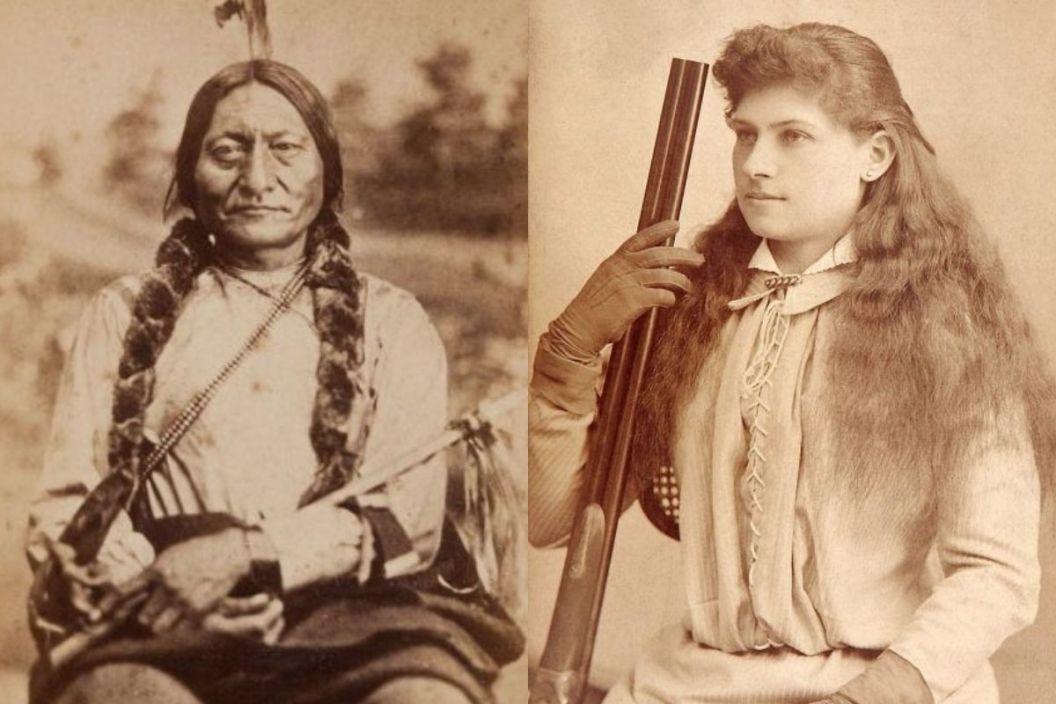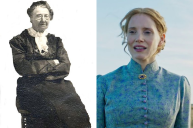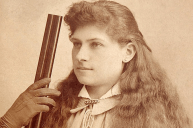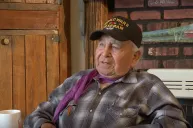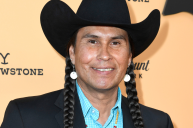Sitting Bull, a chief of the Sioux Nation, led his people for decades in resistance against the exterminating policies of the United States government. Throughout his life, he battled U.S. forces to maintain Native American territory and spoke out against compromising with settlers. So it might surprise you to learn that Sitting Bull "adopted" a well-known white daughter: the legendary sharpshooter Annie Oakley.
?
Chief Sitting Bull
Sitting Bull was born in the Dakota Territory (likely present-day Montana) in 1831 as part of the Hunkpapa Lakota tribe. Beginning in his teenage years, Sitting Bull's bravery was apparent — the reason why his name was conferred — and by the time he was a young man, Sitting Bull was defending Dakota and Lakota tribes against U.S. aggression. In 1864, he was the native leader in the Battle of the Badlands.
Sitting Bull continues as a major Lakota voice following the uprisings of Red Cloud's War. While the powerful Lakota chief Red Cloud agreed to compromise with the U.S. and sign the peace Treaty of Fort Laramie, Sitting Bull put his foot down and stated: "I wish all to know that I do not propose to sell any part of my country." That sentiment would eventually guide Sitting Bull to win the greatest Native American combat victory of all time: the Battle of Little Big Horn.
The Treaty of Fort Laramie established the Great Sioux Reservation: land set aside for the Lakota peoples. And though many Sioux warriors, chose to live on that federally controlled land, Sitting Bull refused to remain dependent on the U.S. government. He lived isolated on the Plains. And his following grew. Tensions arose leading to the Battle of Little Bighorn, or Custer's Last Stand, on June 25, 1876. The armed skirmish occurred along the Little Bighorn River in the Montana Territory. Prior to the battle, Sitting Bull had distinct visions of Lakota victory, further inspiring his underdog warriors. And those visions proved right.
In addition to killing the famed General Custer, Sitting Bull and his followers wiped out the American cavalry in an all-out defeat. But as a result, the U.S. military presence in the area only increased. Still refusing to surrender, Sitting Bull eventually left the territory. Then in 1884, Alvaren Allen, a promoter for Buffalo Bill Cody's traveling Wild West Show, asked that Sitting Bull join the tour on its Northern stretch: those shows were called the "Sitting Bull Connection."
Sitting Bull Meets Annie Oakley
The markswoman Annie Oakley was born Phoebe Ann Mosey in Darke County, Ohio. The year was 1860. Oakley was the sixth of nine children born to her Quaker mother Susan Wise; Oakley's father died when she was a young child and soon after, Wise was widowed for a second time. Due to the circumstances, Oakley learned to hunt and shoot before she was eight years old in order to support the family. She sold her game around the city of Greenville, Ohio — some of it was even shipped off to market in Cincinnati! Oakley's talent, and entrepreneurship, was so advanced that she paid off the family farm's mortgage when she was just 15... around the same time that Sitting Bull was preparing to slaughter Custer's army at the Little Bighorn River.
Read More: Annie Oakley: The Real Woman Behind the Sharpshooting Legend
Before long, everyone in the Ohio region knew of Oakley's unparalleled marksmanship. In 1875, when Oakley was still 15, the traveling marksman Frank E. Butler challenged a Cincinnati hotel owner to a bet: $100 if he could beat any local in a shooting contest. The hotel owner then arranged the now-fabled shooting match between Butler and the teenaged Oakley. And of course, the five-foot-tall little lady managed to kick Butler's ass! Oakley was a certifiable celeb after that sharpshooting victory. But in a dramatic twist, the opponents also fell in love. She and Butler married in 1876. And roughly ten years later, the couple joined Buffalo Bill's Wild West Show where their shooting skills were admired far and wide.
In 1885, Oakley and Sitting Bull crossed paths for the first time as performers for the show. For his part, Sitting Bull simply rode once around the arena and earned $50 a week for that act of spectacle. Rumor has it that while doing so, he would curse the white audiences in his native tongue. Other historians contend that Sitting Bull used the platform to promote education and call for race relations. Regardless, it seems that Sitting Bull was an unusual addition to the roving crew of Buffalo Bill cowboys. Which makes his adoration of Oakley quite an interesting turn.
Apparently, the two became instantly close. Sitting Bull was so impressed by Oakley's marksmanship that he offered her $65, on the spot, just to take a photograph together. In return, Oakley showed great admiration for the elder chief, and a friendship, born of mutual respect, naturally blossomed.
Sitting Bull and Annie Oakley's Special Relationship
Speaking of their deepening friendship, Oakley once said that Sitting Bull made a "great pet" of her. And what's a great pet without a great pet name? It was Sitting Bull who first dubbed Oakley "Little Sure Shot," the stage name which would follow the petite sharpshooter through her long storied career.
And that's not all that Sitting Bull gave her. The chief went on to symbolically adopt the adult Oakley. In her autobiography, Oakley described the unique and emotional event:
"He had asked me to take the place of the daughter he lost shortly after the Custer massacre . She had made the moccasins he wore in the fight — in the struggle where he pittied his brain against that of the white man. He fought justly, for his people had been driven from their God-given inheritance and were living upon broken promises... Sitting Bull's daughter was about my age at the time of my adoption, when he gave me the moccasins he so prized."
Although Oakley herself was not an orphan, her spiritual adoption functioned as a different kind of family-building. Rather than needing Sitting Bull's fathering, the ceremony cemented her own role as a daughter in his life. But sadly, Oakley and Sitting Bull did not have much time to develop that bond. Sitting Bull died in 1890 after he was shot in the head by policemen at Standing Rock in South Dakota. He was roughly 59 years old.
Oakley lived until 1925, when she died of pernicious anemia in her hometown of Greenville, Ohio. She was 66.
"I'm an Indian Too"
The 1946 musical Annie Get Your Gun colorfully reimagines Annie Oakley's life, emphasizing her romance with Frank E. Butler. The first act closes out with Butler's plans to propose to the rising star-Western girl, when he is shown up by Sitting Bull's sudden adoption of Oakley. Oakley's character then breaks out into song — "I'm an Indian Too" — in a number that's certainly offensive by today's (or any) standards. Not only in its lyrics, but in costume, choreography, and spirit...
In 2012, the song was satirized by the Native American sketch comedy troupe the 1491s. (Get it?) You can watch that cheeky parody, which pokes fun at hipster "tribal" trends, above.
